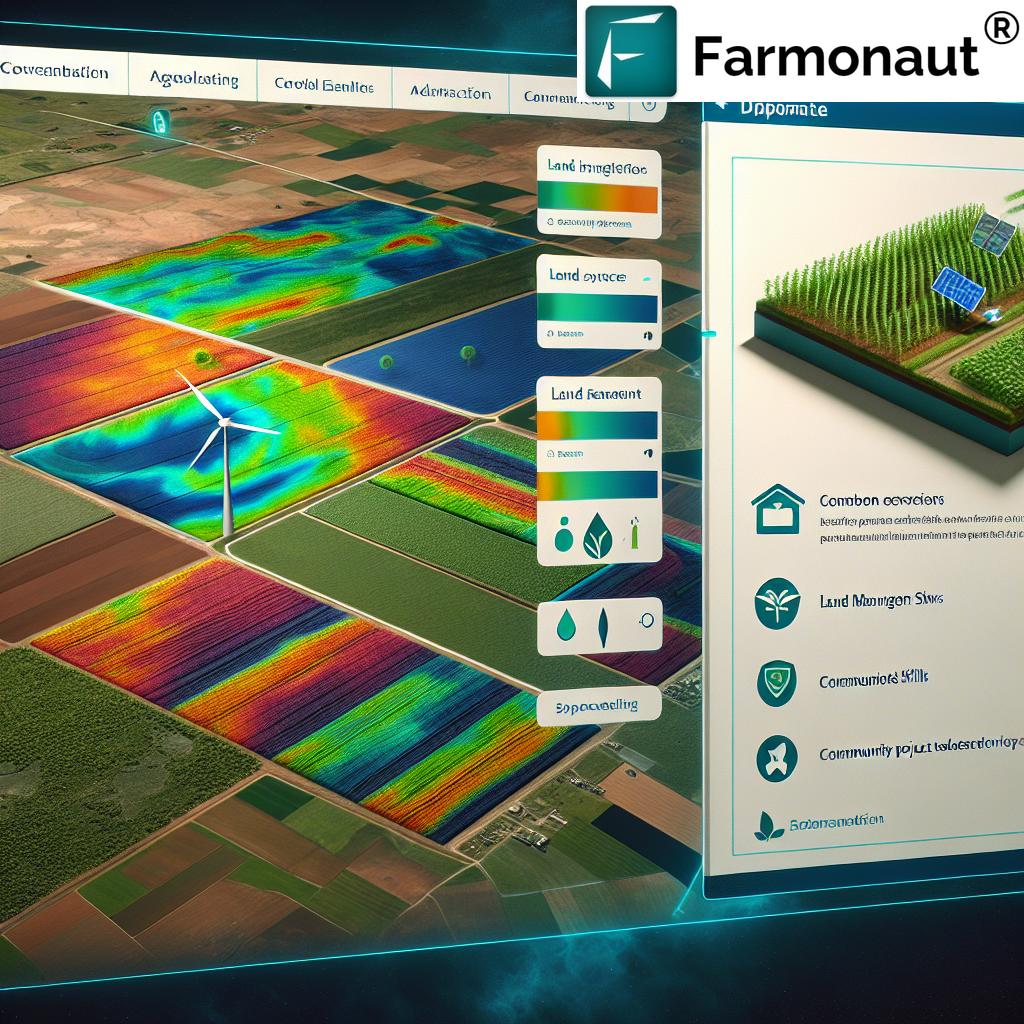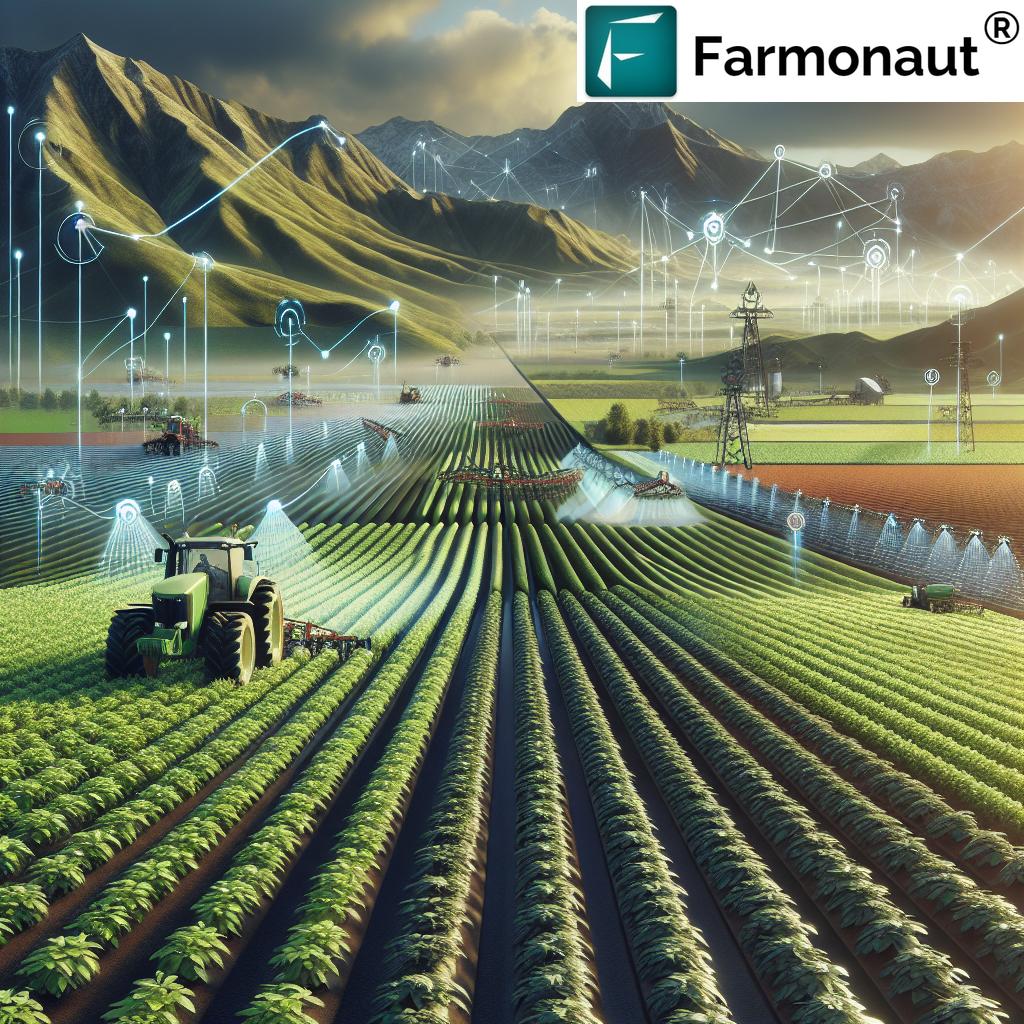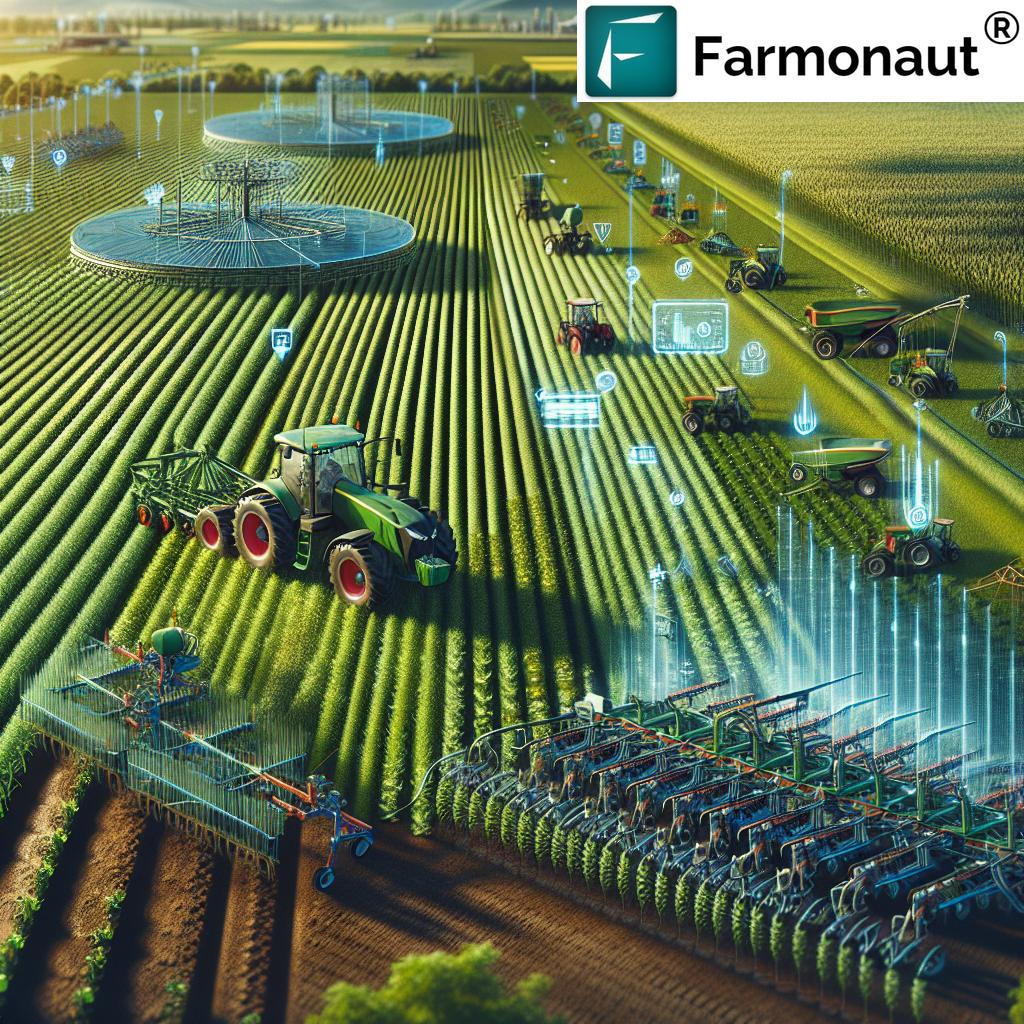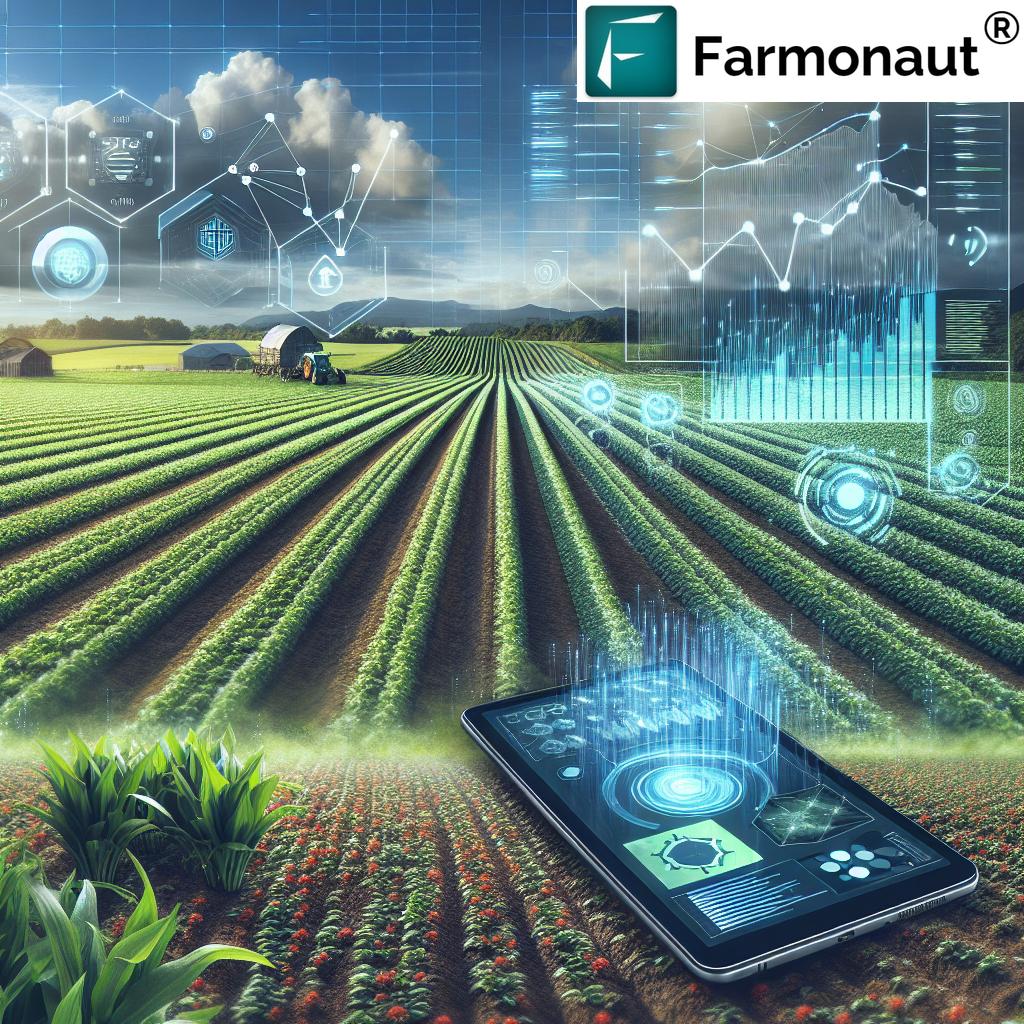Impact of Technology on Agriculture Productivity 2025
- Introduction
- Technology Transforming Agriculture in 2025
- Farmonaut: Satellite-Based Advancements Driving Productivity
- Comparative Impact Table: Technologies Transforming Agriculture Productivity in 2025
- Challenges and the Future of Agricultural Technology
- FAQ: Impact of Technology on Agriculture Productivity 2025
- Conclusion
Introduction
The impact of technology on agriculture productivity in 2025 is unmistakable: from satellites orbiting high above the fields to intelligent systems analyzing every inch of farmland, we are witnessing the backbone of human civilization undergoing a profound transformation. As the global population rises and threats to food security become more pronounced, the agricultural sector is leveraging cutting-edge technological advancements to enhance productivity, promote sustainability, and build resilience against uncertainty.
This comprehensive article explores the multifaceted impact of technology in agriculture today and in the future. We delve into the role of precision farming, AI, digital platforms, automated machinery, and satellite technology in transforming how farmers monitor crops, manage resources, and reach markets. We also address the challenges and future prospects of this ongoing innovation-driven transformation.
Technology Transforming Agriculture in 2025
In 2025, agricultural productivity is universally defined by technology integration at nearly every stage of the farming process. Let’s break down the paramount technologies shaping this new era:
Precision Agriculture: Boosting Productivity
Precision agriculture stands at the forefront of the impact of technology on agriculture. By utilizing satellite imagery, drones, GPS-enabled machinery, and Internet of Things (IoT) sensors, farmers can now monitor the minutest changes across their fields with unprecedented accuracy. Real-time data on soil health, moisture levels, crop growth, and pest infestations offers actionable insights, making possible:
- Optimized irrigation and fertilization scheduling based on sensor-driven soil and weather data.
- Data-driven pest and diseases control, reducing input costs and waste.
- Site-specific interventions, maximizing yield per hectare while minimizing environmental impact.
- Reduced overall input use, building sustainability for the future.
Our collective prospects in agricultural productivity rely on such precision farming practices.
Focus Keyword Example in Context: The impact of technology on agriculture productivity through precision farming has been nothing short of revolutionary. *Technologies* such as IoT *sensors* measure soil moisture and nutrient status constantly, enabling farmers to make *informed decisions* regarding irrigation and fertilization. This transformation is driven by real-time data and connected systems.
- Drone & Satellite Imagery: Identify crop stress, weed patches, and pest outbreaks instantly.
- Remote Sensing: Offers macro and micro views, catching fluctuations every few days.
- IoT-Enabled Equipment: Delivers precise nutrients and water only where and when needed, reducing waste and lowering input costs.
Artificial Intelligence & Machine Learning in Modern Farming
Another significant advancement influencing agricultural productivity is the impact of artificial intelligence (AI) and machine learning. These technological systems process the vast datasets collected from farms, enabling them to:
- Predict crop diseases before visible symptoms appear.
- Recommend optimal planting schedules based on historical and real-time weather data.
- Optimize resource allocation—from water to fertilizers—to increase output while lowering environmental risks.
We now see automated machinery including robotic harvesters and weeders performing repetitive, labor-intensive tasks with efficiency and accuracy exceeding traditional methods, thus tackling the global challenge of agricultural labor shortages and boosting productivity.
Examples of Impact of Technology in Agriculture via AI:
- AI models predict weather anomalies, preventing crop loss and enabling smarter insurance coverages. Satellite-verified crop loan and insurance platforms offer trustworthy data for claims & lending.
- Automated tractors use AI to adjust planting depth and row spacing, maximizing yield and reducing *resource* use.
- Vision-driven robotic weeders eliminate unwanted plants with surgical precision, cutting herbicide costs and promoting sustainability.
Through machine learning, future systems will self-improve as they process new conditions, making farms more responsive to unpredictable variables and fortifying resilience across the agricultural sector.
Biotechnology and Innovations in Crop Development
The impact of technology on farming extends deeply into biotechnology. Gene-editing techniques like CRISPR and the development of genetically modified organisms (GMOs) have brought about:
- More resilient crops—tolerant to drought, heat, pests, and diseases.
- Reduced dependency on chemical pest control and fertilizers.
- Consistent output despite increasingly erratic climatic conditions, directly supporting food security.
These innovations are crucial for regions most vulnerable to climate change. Furthermore, advances in vertical farming and hydroponics are enabling agriculture productivity in urban and land-constrained environments, reducing the reliance on traditional arable land.
Take Farmonaut’s carbon footprint monitoring as an example. By tracking agricultural emissions using satellite and AI, we enable farms to lower their environmental impact and adopt sustainable, climate-smart solutions—crucial for the future of global agriculture.
Modern Digital Platforms & Market Access
The impact of technology in agriculture reaches beyond fields and into the hands of farmers through digital tools. Using mobile applications and online platforms, even smallholder farmers now enjoy:
- Instant access to up-to-date market prices, weather forecasts, and expert agronomy advice.
- Direct links to supply chains, reducing intermediaries and increasing profit margins.
- Decision support systems that analyze data from a wide variety of sources—soil, weather, market, and beyond.
Our digital landscape is leveling the playing field, empowering every grower to increase efficiency, reduce risk, and participate in a more resilient agricultural economy.
Smart Systems Advancing Sustainability
Amid heightened concern for the environment, technology’s impact on agricultural sustainability is more crucial than ever. Smart irrigation systems equipped with IoT sensors deliver water precisely when and where crops need it, directly addressing resource scarcity, particularly in arid regions. Soil and environmental sensors guide decision-making to maintain soil fertility and avoid excess fertilization.
- Solar-powered equipment replaces fossil fuel use, lowering the carbon footprint of agricultural operations.
- Blockchain-based traceability systems guarantee authenticity, quality, and journey of food products—enabling transparent, trustworthy commerce and sustainable practices throughout the supply chain. Explore blockchain product traceability for agriculture.
We believe that integrating environmental monitoring, carbon tracking, and resource management—like our API and satellite-data API solutions—is foundational for responsible global agriculture in 2025 and beyond.
“Smart agricultural systems in 2025 are expected to reduce water usage by nearly 20% while maintaining productivity.”
Farmonaut: Satellite-Based Advancements Driving Productivity
At Farmonaut, we are dedicated to making advanced satellite-driven agricultural insights affordable and accessible for all stakeholders. Our mission is to empower farmers, businesses, and governments through seamless integration of real-time monitoring, AI-based advisory, blockchain traceability, and environmental tracking—all enhancing productivity and resilience in 2025.
- Satellite-Based Monitoring: Our platform delivers detailed multispectral imagery (NDVI and beyond) to monitor crop health, soil moisture, and detect pest infestations. This supports optimal resource management and timely interventions, improving yield and reducing costs.
- AI Advisory Systems: With Jeevn AI, we analyze vast datasets and offer actionable, tailored advice—from planting schedules to fertilization—fine-tuned to each field’s soil and crop status. This tool helps maximize productivity and minimizes risk.
- Blockchain Traceability: Ensuring that every stage of the agricultural supply chain is transparent, our traceability solution leverages blockchain for authentic origin and quality proof—essential for food safety and premium pricing.
- Fleet & Resource Management: Our technologies enable efficient tracking and deployment of machinery and logistics assets, drastically reducing operational costs and improving input efficiency. Tailored for large-scale farm management, explore our solutions here.
- Environmental Impact Monitoring: We provide dynamic carbon footprinting to help users adhere to sustainability mandates, demonstrating ongoing commitment to the planet and future generations.
Organizations, governments, and individual users benefit from these features via flexible subscription models and API integrations. To experience the advantages firsthand, view our fleet and resource management page or try our API: Farmonaut Satellite API. Developers can explore detailed integration steps in the API Developer Docs.
Comparative Impact Table: Technologies Transforming Agriculture Productivity in 2025
| Technology | Estimated Yield Increase (%) | Estimated Cost Reduction (%) | Environmental Benefit | Farmer Adoption Rate (%) |
|---|---|---|---|---|
| Precision Agriculture (Drones, GPS, IoT Sensors) | 15-30 | 10-20 | Up to 20% lower water and chemical input | 55 |
| AI-Driven Analytics & Automated Machinery | 10-25 | 10-18 | Reduced fuel and chemical usage by 10-15% | 40 |
| Biotechnology (GMOs, CRISPR, Disease Resistant Seeds) | 20-35 | 8-15 | Less pesticide/fertilizer runoff | 50 |
| Smart Irrigation Systems | 10-15 | 12-22 | Up to 25% reduction in water usage | 45 |
| Blockchain Traceability Systems | 5-8 (via less spoilage, improved prices) | 3-7 | Improved food safety & transparency | 30 |
| Satellite-Based Monitoring & Management | 18-27 | 12-18 | Precision interventions, minimized chemical use | 50 |
Challenges and the Future of Agricultural Technology
For all its promise, the impact of technology on agriculture productivity in 2025 is not without obstacles. Barriers include:
- High Initial Investment: Advanced systems can carry steep upfront costs, often out of reach for smallholders unless supported.
- Digital Literacy: Uneven access to training hampers effective technology adoption, particularly in developing regions.
- Connectivity Gaps: Reliable internet and energy access are critical infrastructure needs for smart farms.
- Data Privacy & Security: Safeguarding farm, environmental, and financial data is a rising concern.
To overcome these challenges and ensure equitable benefits, ongoing investment in infrastructure, digital education, and policy frameworks is essential.
The future of farming will see even deeper integration of connected devices, self-learning AI, and big data solutions. Technologies like remote plantation and forest advisory and large-scale satellite management will continue shaping agricultural productivity for decades to come.
FAQ: Impact of Technology on Agriculture Productivity 2025
Q1: What are the most significant advancements influencing agricultural productivity in 2025?
The most significant advancements include precision farming utilizing drones and sensors, AI-driven analytics, satellite monitoring, biotechnology (like GMOs and CRISPR), blockchain traceability, and smart irrigation systems. These innovations increase productivity, reduce waste, and enhance sustainability.
Q2: How does AI impact agriculture productivity?
AI analyzes vast datasets from farms to predict crop diseases, recommend optimal planting times, and automate machinery. This increases efficiency, yields, and resource use while addressing labor shortages and improving product quality.
Q3: Can technology help smallholder farmers?
Yes. Digital platforms, mobile apps, and satellite insights (like those from Farmonaut) provide smallholders with real-time weather updates, expert advice, and access to better prices and financial products.
Q4: What role does blockchain play in agriculture?
Blockchain traceability ensures the authenticity, safety, and transparency of food products across the supply chain. This builds trust, fights fraud, and enhances product value.
Q5: How does technology advance agricultural sustainability?
By automating inputs (fertilizer, water), reducing chemical use, and monitoring environmental impact (carbon, biodiversity), tech allows farmers to increase yields sustainably and with lower environmental impact.
Conclusion
The impact of technology on agriculture productivity in 2025 is broad and transformative, rooted in precision, efficiency, and sustainability. Precision agriculture, AI-driven analytics, biotechnology, smart irrigation, and digital platforms have streamlined farm operations, boosted yield, and fostered resilience for the future. Companies like Farmonaut are shaping this revolution—providing satellite-driven, AI-enhanced monitoring, blockchain-backed traceability, and comprehensive resource management tools that drive efficiency and empower farmers, businesses, and policymakers globally.
While challenges persist—such as high initial costs and digital literacy barriers—the anticipation for 2025 and beyond is overwhelmingly positive. Embracing these technologies not only meets growing food demand but does so while protecting our natural resources and nurturing rural livelihoods. As we collectively move forward, ongoing innovation and inclusive technological adoption remain crucial to building a prosperous, secure, and sustainable future for agriculture.
For those keen to implement these innovations, start with our app or API—unlock better yields, improved monitoring, and sustainable success.














